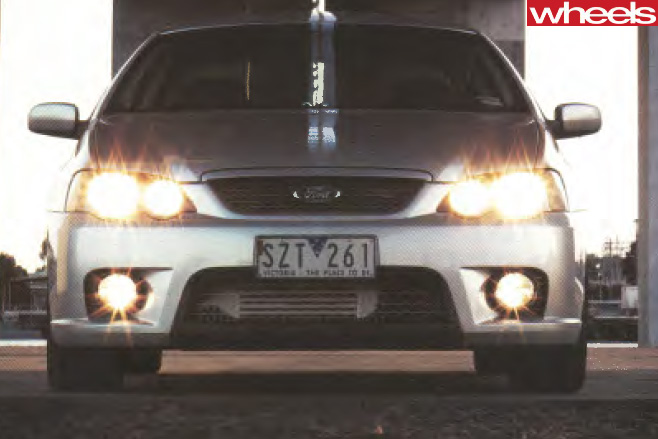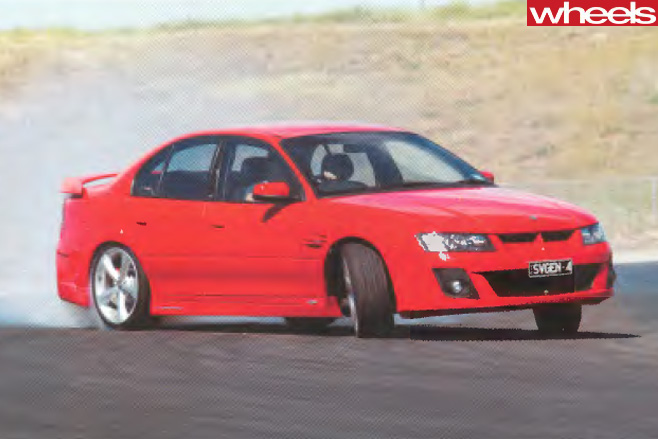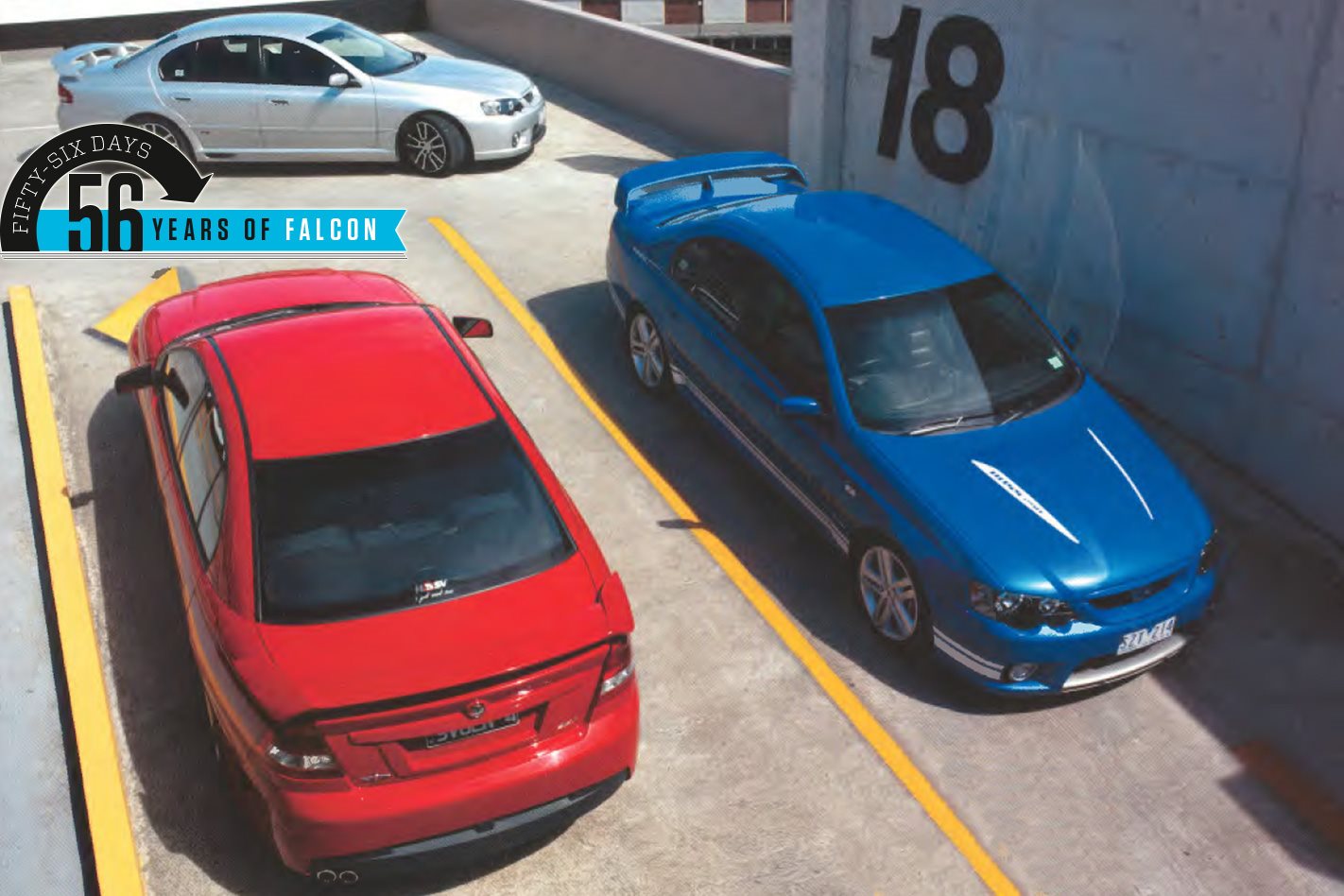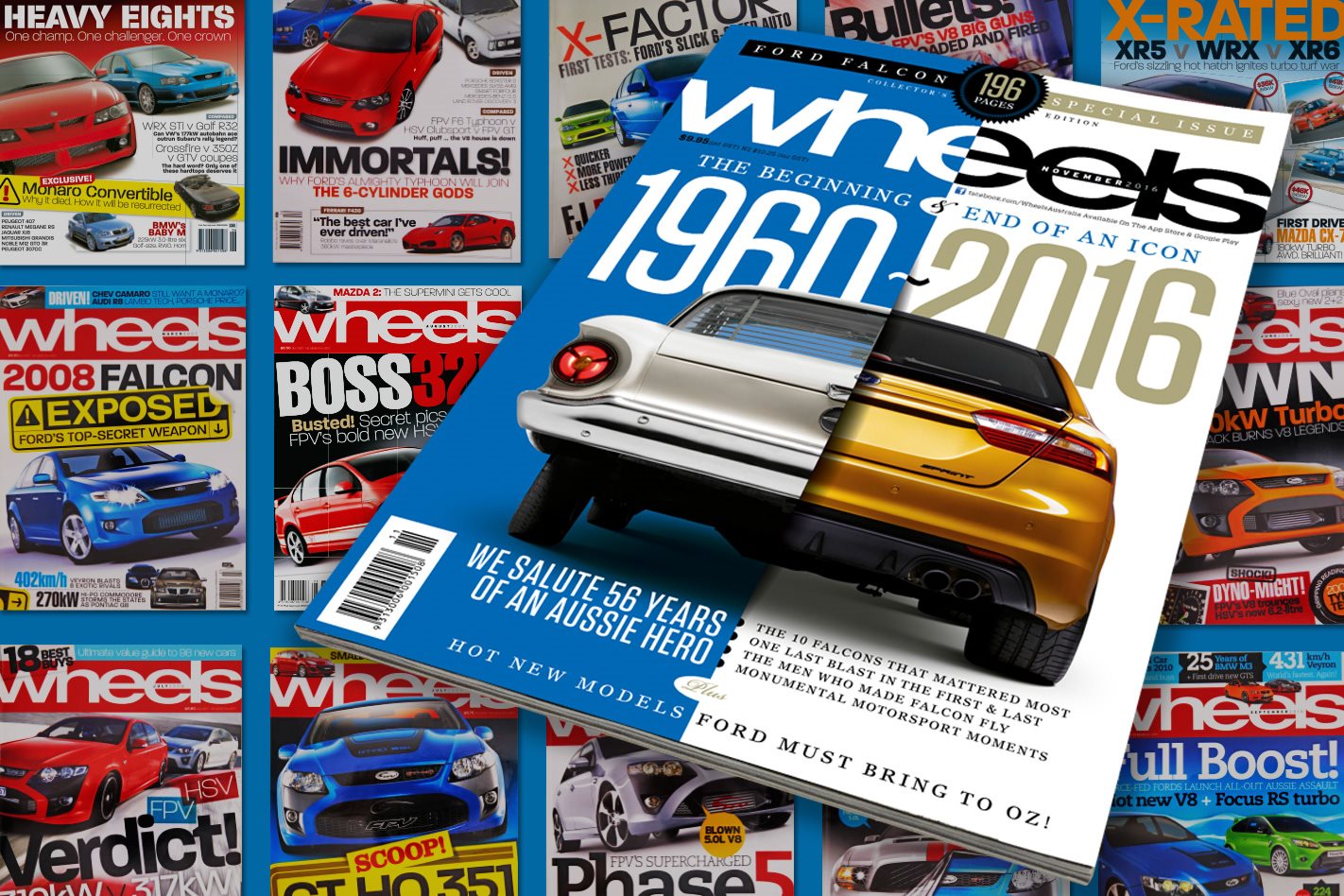First published in the March 2004 issue of Wheels magazine, Australia’s best car mag since 1953.
Is Australia ready for a world where the V8 is not king? Wheels was ahead of the curve with this question …
BIT LIKE boxers and briefs, this game of sixes and eights. Few buyers swing both ways, and it creates a conundrum that strikes to the core of automotive Australia: forced induction versus the purity of cubic inches. Specifically, it poses the question: is Australia ready for a world where V8s are not king? And if the FPV F6 Typhoon really is the best locally produced performance sedan, are we all ready to acknowledge it?
That FPV would enhance Ford’s XR6 Turbo didn’t take an induction expert to predict. In fact, both the Falcon XR6T and a company called Ford Performance Vehicles were unveiled on that same September morning in 2002. So, the question was never if, simply when, FPV would do it.
In FPV boss David Flint’s own words, the F6 Typhoon is a “Super XR6T”, an up-spec evolution of the Ford on which it’s based. Changes to the driveline and suspension aren’t substantial, but, then, they didn’t need to be. The engine features FPV’s own dual-entry air intake feeding the same XR6T Garrett turbocharger operating at 50 percent higher boost pressure (0.65bar/9.4psi). Air then blasts through a bigger 12-core air-to-air intercooler before entering the combustion chamber via inlet valves with new heavy-duty springs.

The torque figure is the highest ever for an Australian production engine. Which is why the BTR four-speed automatic gearbox won’t be offered in the F6 – it simply can’t be counted on to reliably handle the torque. So, the only transmission is Tremec’s T56 six-speed manual, with the same XR6T ratios and modifications detailed by Wheels last month. To recap, F6 Typhoon scores a shorter final-drive ratio of 3.73:1 but a taller first compared to the GT gearset. Second through sixth gears are shared in both F6 and GT. There are some changes to the casing and linkages, dictated by packaging the T56 behind a six instead of a V8.
In the real world, this gearset means Typhoon has longer overall gearing in first, and is more closely stacked second to sixth. This approach would make sense in a highly-strung turbocharger installation with nothing down low, but not with the Typhoon’s mild boost or its table-top torque curve.
Typhoon’s mill pumps out its 550Nm peak from 2000rpm to 4250rpm. And it’s making more than 400Nm from idle to cut-out. Short on grunt? Nope.
We head for the hills north-east of Melbourne, where the roads climb and straights are scarce. Blacktop carves through the densely wooded state forest, curving and glistening like a snake basking in the sun. Nature’s peace disintegrates on the cresting wave of our thundering invaders. The rich, deep-throated growl of two angry V8s reverberates off the timber, punctuated by tyre chirps and cornering squeals.
A third entity leads the charge to the top. Its smoother yet equally predatory roar carries a screaming, high-pitched undercurrent. Flashes of silver glimpsed through the trees, then blue, then red, which vanish as quickly as they appeared.

This is the first time we’ve compared the Z Series Clubsport and its 6.0-litre LS2 with the FPV GT and its new six-speed T56 gearbox. The Clubsport’s sizeable cube advantage would seem reason enough for the GT to feel nervous. But the peak power and torque differences are minimal – less than 3 percent – because FPV efficiently milks every drop from its classy 32-valve, 5.4-litre Boss V8.
But there’s no denying the HSV’s new lease on life. Rich veins of torque course through the Clubsport, which now enjoys nothing more than to show off its ability to defy rear-wheel traction. It’s happy to lope along at freeway speeds, but drop gears and belt the throttle and a Pirelli P Zero is the last thing you’d want to be.
On the straights, the advantage goes to the HSV over the GT, but by the barest of margins. And only until the next corner, where the Clubsport’s weaknesses conspire against it. It can’t match the GT for steering feel and, despite copping a brake upgrade, lacks tangible quality feel through the pedal and endurance when you’re on a serious charge.
It’s an incremental advantage to the GT, whose clean cornering lines contrast sharply with the Clubsport’s less-refined curve control. Where the GT settles quickly, holding the line as you finesse the throttle, the Clubsport scrubs ever-so-slightly wide in response to any push from the rear. Throw in a rutted or crumbling surface on the apex and, where the Clubsport feels unsettled and demands more lock, the GT barely flinches.

Beefier springs mean GT has less diagonal pitch on turn-in, it sits flatter through corners, and also better resists squat under acceleration and dive under brakes. It’s a subtle change, but, coupled with that extra gear ratio, it moves the Ford a notch or two along the slider between grand tourer and hardcore sports sedan.
Put simply, the GT’s suspension is more convincing, more cohesive than Clubsport’s. The GT instils real trust in its driver; the Clubsport, it’s got to be said, leaves the door to bad behaviour slightly ajar.
It almost seems unfair to throw the Typhoon into the same pit as these two old enemies; unreasonable on the V8s to unleash this new, high-tech predator into their midst. Though not exactly blown away by Typhoon’s force, they are bested for in-gear acceleration.
We’re back to boxers and briefs, because the FPV F6 Typhoon possesses intrinsically different dynamic characteristics to the V8s. Softer springs at the front mean it dives a little harder under brakes than the GT, despite its 60kg weight advantage.
Turn-in is not as sharp, nor does the steering wheel feel totally composed or settled in your hands as cornering Gs climb. It’s lighter, and demands less effort, but has less resistance to fend off that springy return-to-centre action. Worse, it can, at times, withdraw you from the moment, as you divert more attention from road to wheel.

Where 21st-century V8s are about immediate pleasures, the F6 is a thoughtful beast. Punch the throttle on the GT or the Clubsport and you receive an urgent reply. No waiting, no building, just a hard shove in the back as the car bolts for the horizon.
The Typhoon takes a more considered approach. You almost sense it weighing up your request before responding as the turbo comes on stream. Confirmation that your wish has been granted arrives first in the form of a low, windy whistle. It’s accompanied by a soft urge, a tentative increase in velocity that builds exponentially, doubling in intensity with every fresh lungful of air.
The TYPhoon’s turbo lag is short, but requires familiarity. Adjustments to driving style must be made; the delay taken into account. It may be only a matter of tenths, so get into the throttle sooner and wait for the response instead of burying your right foot further with impatience. The rewards will come; when they do, you need to be ready.
If V8 initial acceleration is akin to being hit with a giant cricket bat, the typhoon’s is more like climbing into an enormous slingshot. There’s no instant wallop that smacks you in the back, but it’s a monstrous force nonetheless, like the meteorological phenomenon whose name it bears.
Pecking order? The Clubsport is third, owing to less communicative controls and its relative lack of on-road sophistication in such esteemed company. Both Fords deliver better driving dynamics and instil more trust at the limit. They also flatten the road’s irregularities more convincingly than the HSV.
Splitting the two Fords is tougher, much tougher, and demands a more critical eye to isolate the differences. The GT’s better steering edges it ahead, but that slim advantage is blown away by typhoon’s surging in-gear acceleration. We’re not talking tenths here, but whole seconds and sometimes longer.
More than enough for Typhoon’s thrusting turbocharged performance to catch both V8s with their pants down.





